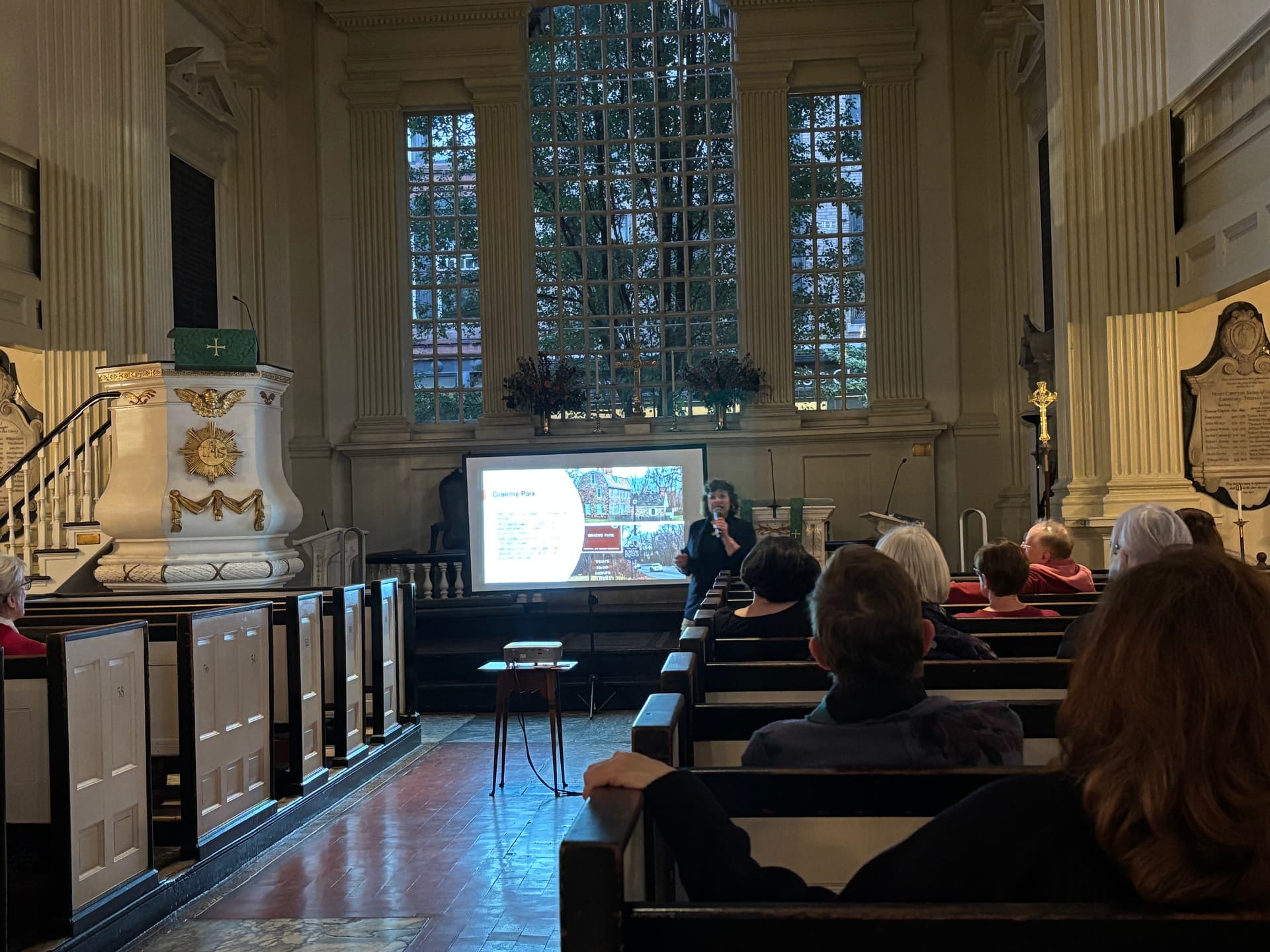Bringing Elizabeth Graeme back to life at Historic Christ Church

It was such an honor for me to speak at Christ Church on October 9th. Do you know about Christ Church in Philadelphia? Founded in 1695, the current building was completed in 1744. If only the walls could talk! George Washington, Ben Franklin, John Adams, Betsy Ross, and countless other 18th century celebrities sat in its beautiful white pews and contemplated the creation of a new nation during the American Revolution. The church's burial grounds feature many signers of the Declaration of Independence and the Constitution. And who isn't awed by the fact that Christ Church's steeple made it the tallest building in North American for 55 years? What an incredible thought. Christ Church is special, and special to me.
More than ten years ago, I was writing my novel about Elizabeth (Betsy) Graeme, and I visited Christ Church for the first time. I would sit in an empty pew, staring out the same Palladian window that Betsy had looked through, and try to imagine Betsy's life so she would come alive in my book. Betsy was fascinating to me. She could read and write in several languages, was a poet, translated classical literature, and had been engaged to and then rejected by Ben Franklin's son, William. The heartbreak from that broken union propelled her to visit England with the then-minister of Christ Church, Richard Peters, where she met King George III in London and spent almost sixteen months exploring England and visiting extended family in Scotland. Sadly, news of her mother's death back in Philadelphia reached Betsy and brought her prematurely back home in December of 1765.
As a colonial gal, Betsy's actions were quite bold when she crossed an ocean and refused most of her suitors after her botched engagement. Back in Philadelphia, she seemed resigned to being a spinster and sharpening her quill to produce great writing. That is, until the night that Betsy's friend, Dr. Benjamin Rush, brought a handsome stranger to Betsy's house during a social evening in December 1771. That chance meeting changed everything. Betsy fell hard for Henry Hugh Fergusson, a Scotsman who was eleven years her junior.
Unfortunately, happiness continued to elude Betsy. Her father, Dr. Thomas Graeme, didn't like Henry and refused to bless the union. Despite being a lifelong congregant in the Graeme family pew at Christ Church (Betsy was baptized there at a day old in 1737), Betsy married Henry in secret at Old Swede's Church in April 1772 under cover of darkness. Quite the daring move for a Philly girl whose family was intertwined with the Penns, then the ruling family of Pennsylvania.
Henry and Betsy seemed to be doomed from the start. Henry became a loyalist during the revolution and Betsy joined the patriots, as I wrote about in my novel, The Power to Deny. What a wild ride.
I often think about Betsy as I walk past her gravestone, located just outside the main door to the church. She died in 1801 at the age of 64 after twenty unhappy years of betrayal. I tried to do her justice as I shared her story with attendees at Christ Church earlier this month. She was brilliant; she was ahead of her time; she was flawed. What an incredible life she had, backlit by the French and Indian war, the American Revolution, and the start of a new nation.
For me, presenting at Christ Church felt like coming home. I remembered how I had felt when I visited for the first time, searching for Betsy, compared to how I felt standing at the front of the church, years later, sharing her story. Thank you to Director of Education & Preservation, Matthew Haven, for inviting me, and for letting me speak in front of the Palladian window that has travelled time between Betsy and me.
Let's keep writing women back into history.